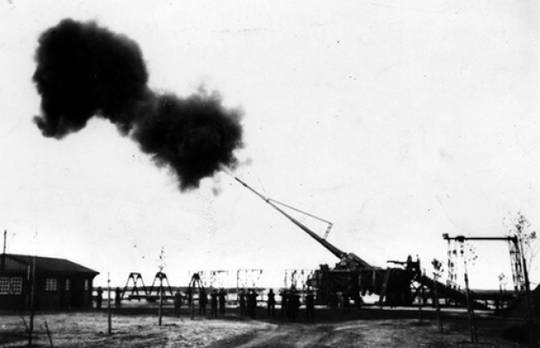The innovations of WWI weaponry took many by surprise during the conflicts. Most had thought that the war would be a standard affair, and would be over swiftly. Once numerous never-before-seen armaments came to light, the entire nature of warfare changed with them. It took some adjustments to learn how to use the new technologies, but even more adjustment to learn how to defend against them. The arrival of WWI weaponry brought with it the fanfare of death.
Not all arms were completely new, though many were either altered or used to different effect during the war. Machine guns, for instance, were given high rates of fire and made lighter for easier transport. They were one of two types of WWI weaponry used almost exclusively to hold back the enemy to their own trenches, the other one being barbed wire. The latter also served the purpose of restricting troops’ movement so that snipers could more easily aim their shots. Rifles were also given higher fire rates than ever before.
Vehicles were a major part of warfare as well. Battles at the Somme saw the innovation of tanks, which overcame the restrictions of barbed wire and machine guns. There were also innovations in aerial forms of WWI weaponry such as zeppelin bombers and machine gun-mounted planes. The war also saw heavy use of German submarines as well as Q-ships, British merchant ships armed with hidden weapons. The submarines were by far more useful, though the Q-ships managed their fair share of surprise attacks, the Independent.ie reports.
Among the most notorious innovations were mustard gas and artillery fire.Mustard gas was actually just one of several dangerous gases employed as a deadly and terrifying form of WWI weaponry. Those who did not die from the gases were blinded and often received nasty chemical burns. Artillery fire killed more than anyone, however, and was used to thin out enemy ranks. The worst offender was the Paris Gun, so-named for its use by the Germans against the French. It was capable of attacking from nearly 75 miles off.
With the slew of WWI weaponry coloring the battlefields during the conflicts, it almost seems amazing that anyone survived at all. Some of these weapons, such as rifles, machine guns, and vehicles, saw more improvements over time. Others are not used so much anymore, such as gases and artillery. Whether or not these styles of WWI weaponry are used today, they all show the horrors that men can perform upon one another when inspired by war.
